Find out why your favorite musicians wear headphones when recording and performing live.
Many believe that musicians wear headphones as a mere style statement during recordings and live performances.
However, this common perception overlooks the technical challenges musicians face in ensuring clear sound and focus.
Dive into this article to uncover the real reasons behind this practice and how headphones play a pivotal role in a musician’s world – both for recording and live performances. Continue reading to unravel the mystery.
Why Do Musicians Wear Headphones When Recording?
Musicians usually wear headphones in a recording studio to hear both the other instruments’ audio and their own without recording any unwanted noises, such as sound bleeds.
Let’s explore the significance of this practice in enhancing their recordings below:
Keeping things clear
One reason why singers wear headphones when recording is because of the process of overdubbing.
Overdubbing means adding more to what’s been recorded before. This allows rappers, singers, and musicians to record the same part multiple times or make changes without rerecording others’ parts.
Wearing headphones also helps keep each individual recording clear and free from any sound bleed.
Bleed is when a mic that is intended for a particular instrument or voice picks up other sounds during recording. This detrimentally affects the ability to separate vocals and instruments during the mixing process.
Separating instruments in multi-track recordings
In the past, bands and performers would record in one room at the same time. They either use a few mics scattered in different areas near their instruments or a single mic placed in the middle to catch the combined sound. Instead of headphones, they listened using speakers and amplifiers.
This made it hard to make any impactful EQ changes when mixing, as one minor change would affect how all the instruments and voices sounded as well.
However, as recording tools got better with multitrack recording, artists and sound engineers could now record each instrument and voice on their own.
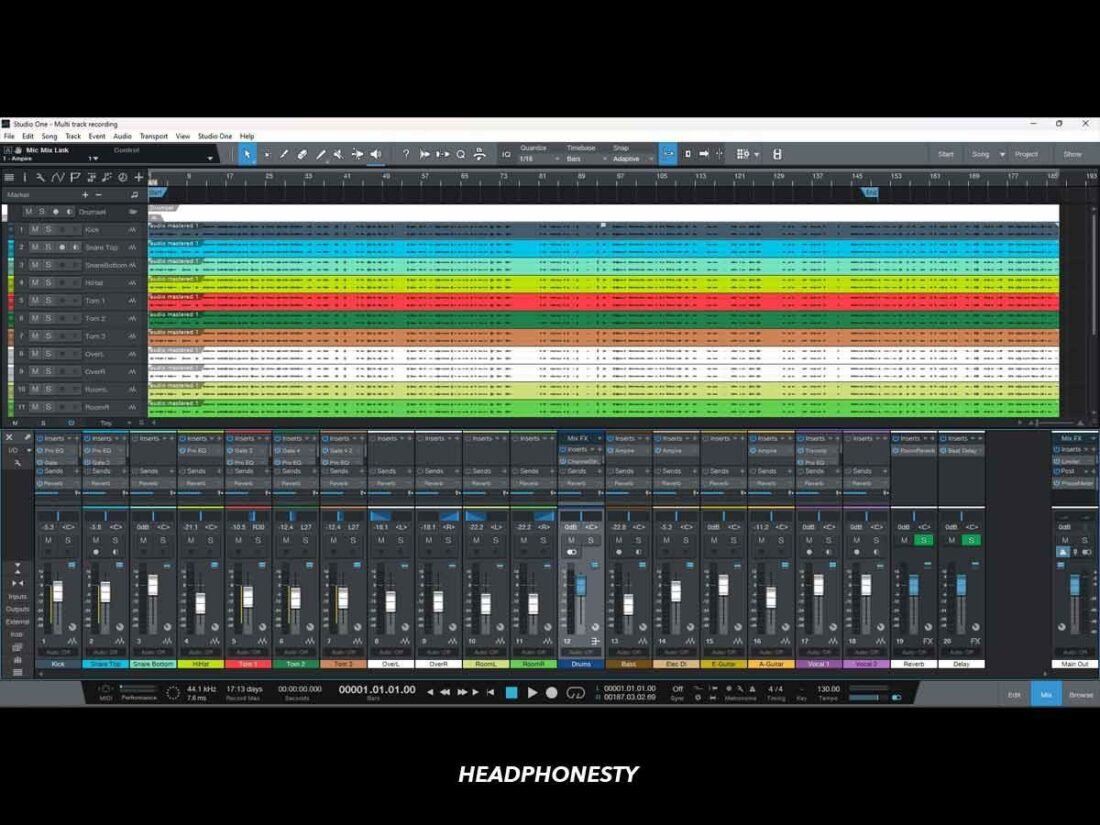
This method lets bands listen to themselves while recording together. They connect their instruments to a mixer, which records each instrument in individual tracks while also directing the sound to their headphones simultaneously.
This creates individual tracks that can be changed or mixed separately before being put together.
Timing
Another important aspect to keep in mind when recording is timing. That’s why musicians wear headphones in order to hear a click track so that everyone involved stays within the beat.
A click track is like a metronome. It provides a beat that serves as an audio cue, which helps vocalists and musicians synchronize their performances and stay in rhythm.
Why Do Musicians Wear Headphones When Performing Live?

Singers and musicians wear in-ear monitors (IEMs) to hear themselves, other instruments, and audio cues clearly during live performances.
With the stage monitors, instrument amplifiers, and the screaming crowd, the stage can also be quite loud. IEMs protect the musicians’ ears from exposure to these noises on a regular basis.
Let’s discuss more of this below:
Stage monitoring
In general, two things need to happen in order to have a successful live musical performance:
- The audience needs to hear the performers.
- The performers need to hear themselves.
Musicians need to hear themselves to make sure that they sound right and are all performing in rhythm. That’s why the only way to fulfill the second requirement is to implement a stage monitoring system.
Traditionally, most musicians and singers would use floor monitor speakers or floor wedges as their primary monitoring system.
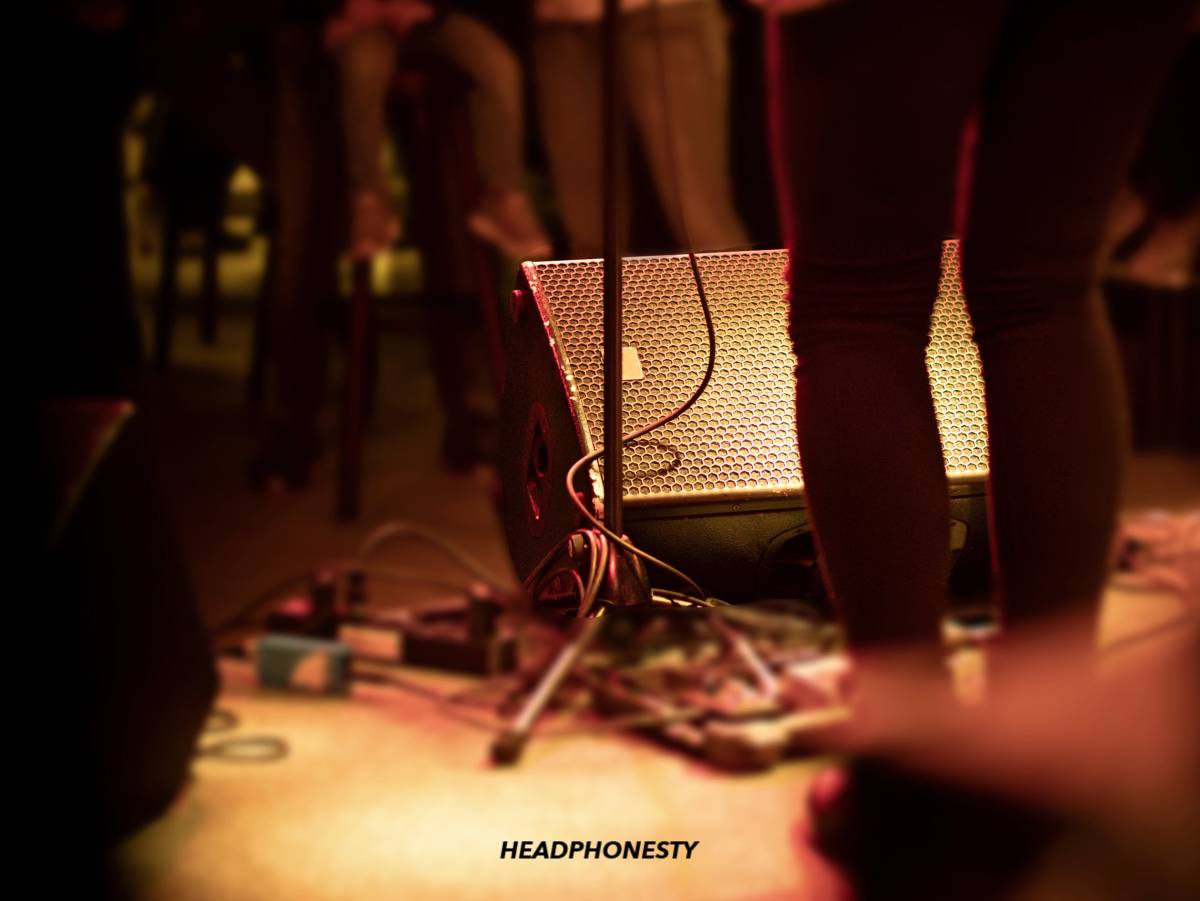
However, more and more artists are switching to in-ear monitors instead of floor wedges today. This is because in-ear monitors have several benefits compared to the older way of using floor speakers. Here are some of them:
Sound isolation
IEMs don’t just give singers excellent sound quality on their personal mixes. Since these devices fit inside the ear, they also make a strong seal that cuts down noise levels while allowing the musician to perform without distractions.
On the other hand, stage speaker monitors or floor wedges can create problems for both the performers and the audience.
These wedges won’t help with sound isolation. Instead, they may even mix with the audience’s sound system. This makes it hard for musicians to hear themselves right and hurt how the whole band sounds.
Optimal volume levels
With their noise-blocking ability, musicians can hear their tracks well and adjust the volume as they like. This not only makes them feel at ease while performing but also keeps their hearing safe over time since they won’t have to keep increasing the volume to hear themselves.
Some musicians also need to hear specific instruments louder than others. For example, bassists must listen to the drums better to stay in rhythm. At the same time, vocalists need to hear their own voices to make sure that they’re singing in tune.
By using in-ear monitors, these musicians can adjust their mix personally to how they like it and hear what they want.
This is where on-stage monitoring systems face a problem. They have to play music really loud so all musicians can hear it. On-stage monitors also cannot provide personalized mixes since they have to cater to everyone on stage.
Elimination of feedback
When using floor wedges, there’s a chance that the singers’ microphones will pick up the loud music from the speakers, creating an ear-splitting feedback loop. This often occurs when the microphones and speakers are very near each other, or if the microphones are set to a high gain.
By not using speakers and directly putting the sound and music into the musician’s ear through the use of IEMs instead, feedback is essentially eliminated.
Mobility
Wearing IEMs allows you to bring the sound wherever you go, thus freeing up your movement while also providing you with more space to work with on stage.
On the other hand, the use of stage monitoring systems restricts movement by requiring musicians to stay at a certain “sweet spot” in order to properly hear the music. On top of that, the floor wedges and loudspeakers take up valuable stage space as well.
Musical direction
Sometimes, it can benefit musicians when a musical director gives them real-time directions while they are performing. This makes sure everyone plays in sync, and the performance goes smoothly even when there are sudden changes.
How Do In-Ear Monitors Work?
In-ear monitors are basically made up of three important components:
- Transmitter – Transmits the audio or the music of the performance (monitor mix) to the receiver.
- Receiver – Receives the transmitted audio and is connected to the earphones. It’s usually worn as a belt pack and has volume control knobs for the musician to adjust the sound level.
- IEMs – Serves as a way to cancel out unwanted noise from entering the ear while also directly transmitting the monitor mix to the musicians in high quality.
IEMs connect to a wireless bodypack or wired belt pack attached to the musician, which acts as receivers. The transmitter, usually a headphone amp like the Rolls PM50se (wired) or Shure PSM300 (wireless), sends the audio signals to these receivers from the sound mixer.
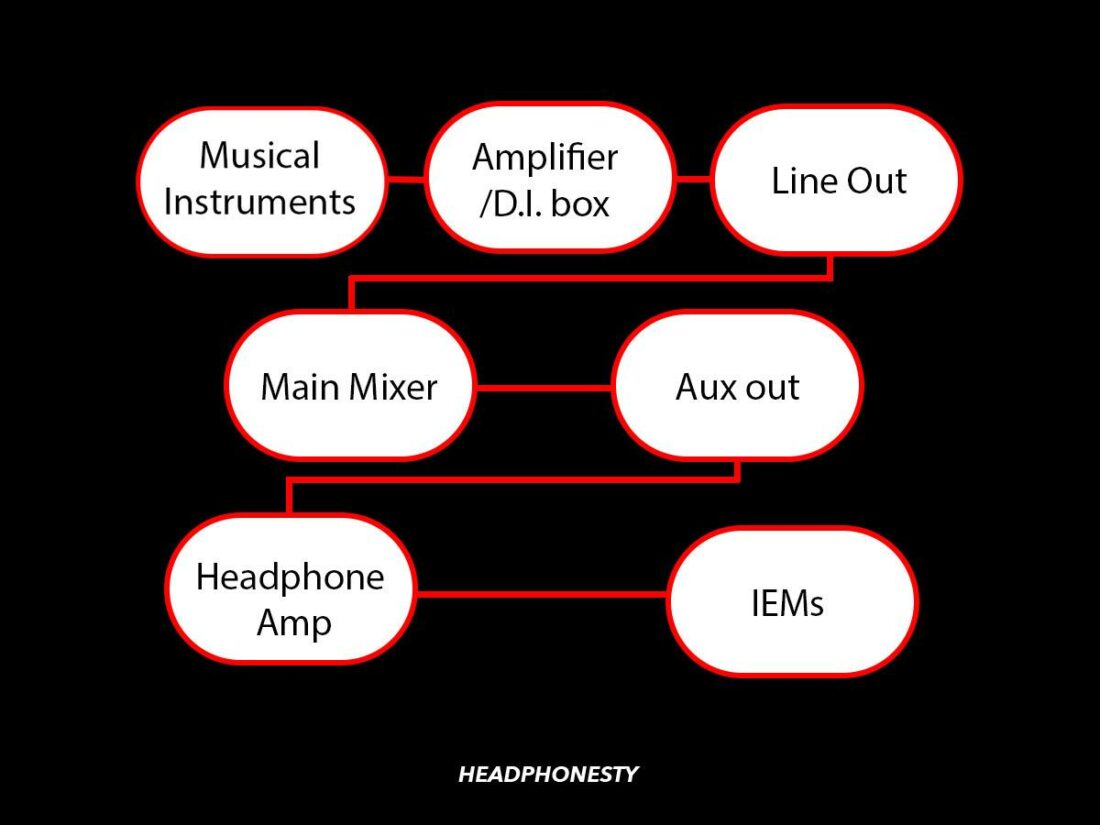
Depending on how things are set up, each musician or singer can have their own personalized audio mix. This mix lets them hear what they and others are doing right then and there, making their live performance even better.
Frequently Asked Questions
- Can I use regular headphones or earbuds for recording or live performance monitoring?
- What type of headphones are great for recording?
- What are the disadvantages of using headphones for musicians when performing?
Can I use regular headphones or earbuds for recording or live performance monitoring?
It’s not advisable to use regular headphones or earbuds for both recording and live performance, mainly because of two reasons: sound accuracy and isolation.
Studio headphones and in-ear monitors usually have a neutral sound signature, so they do not boost or alter the frequencies. This makes sure that what the musicians hear is as close as possible to their actual sound.
On the other hand, regular headphones usually add ‘color’ to the frequencies by boosting or decreasing the bass, treble, and mids. This prevents musicians from identifying and making the necessary changes, as they may not be as noticeable.
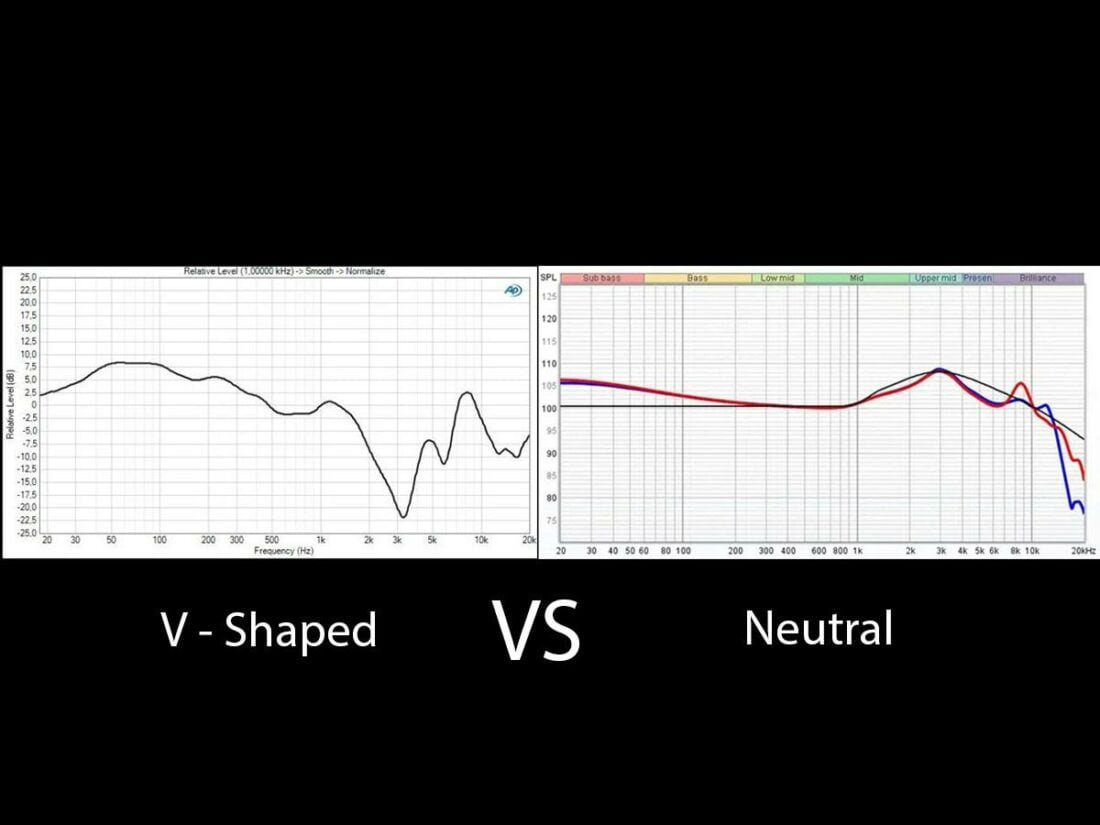
Music studios and stage performances are also generally noisy places. That’s why musicians need good studio headphones or IEMs that block out noise. This way, they can record and perform their song with no distractions.
Vocalists also benefit from this, as they won’t have to make their voices louder just to hear them.
What type of headphones are great for recording?
When choosing studio headphones, you’ll encounter two main types: open-back and closed-back. Choosing one over the other depends on the purpose.
Open-back headphones are great for audio mixing, as they usually have a more natural sound. On the other hand, closed-back headphones are better for recording since they avoid sound bleed.
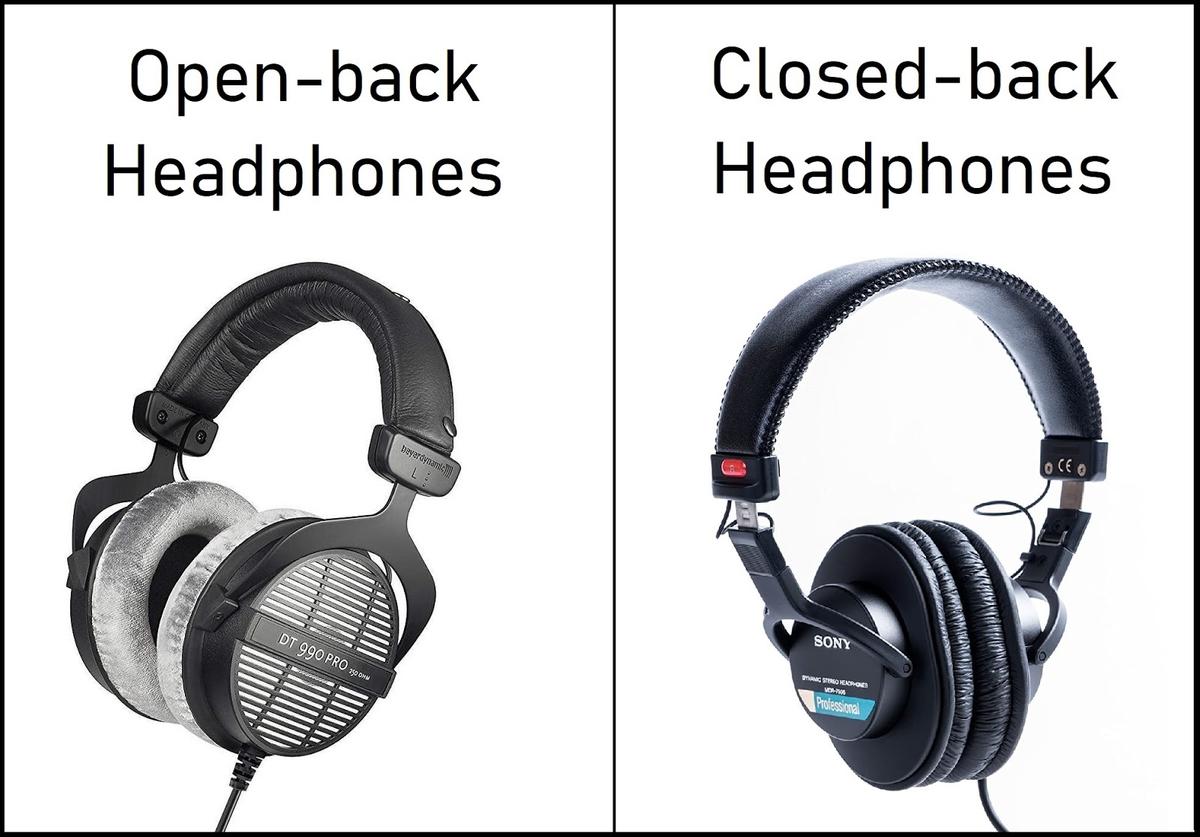
What are the disadvantages of using headphones for musicians when performing?
You may notice some musicians taking off their headphones or IEMs while performing. This is usually due to the two most common disadvantages: not hearing the audience enough or audio malfunctions.
For one, using in-ear monitors can take some ‘vibe’ away. Every musician loves to take in all the cheers and shouts of their adoring fans during any live performance. However, due to the effective sound isolation of IEMs, it’s hard for singers to hear the crowd.
Next, although the chances of audio malfunctions are slim, they do happen sometimes. Whether the audio cuts out, the monitor mix is too loud, or there is any other problem, these issues can definitely wreck a performance when they happen.
Conclusion
The importance of a good pair of studio headphones or IEMs goes a long way in a musician’s career. Whether it’s recording their latest album in the music studio, or having their live performance in front of thousands of fans, wearing a good pair of headphones/IEMs is essential in those scenarios.
Through the detailed explanations in this article, you should now know why musicians wear headphones during recording sessions and live performances.
Do you have any other questions regarding this topic? Feel free to let us know in the comments down below!
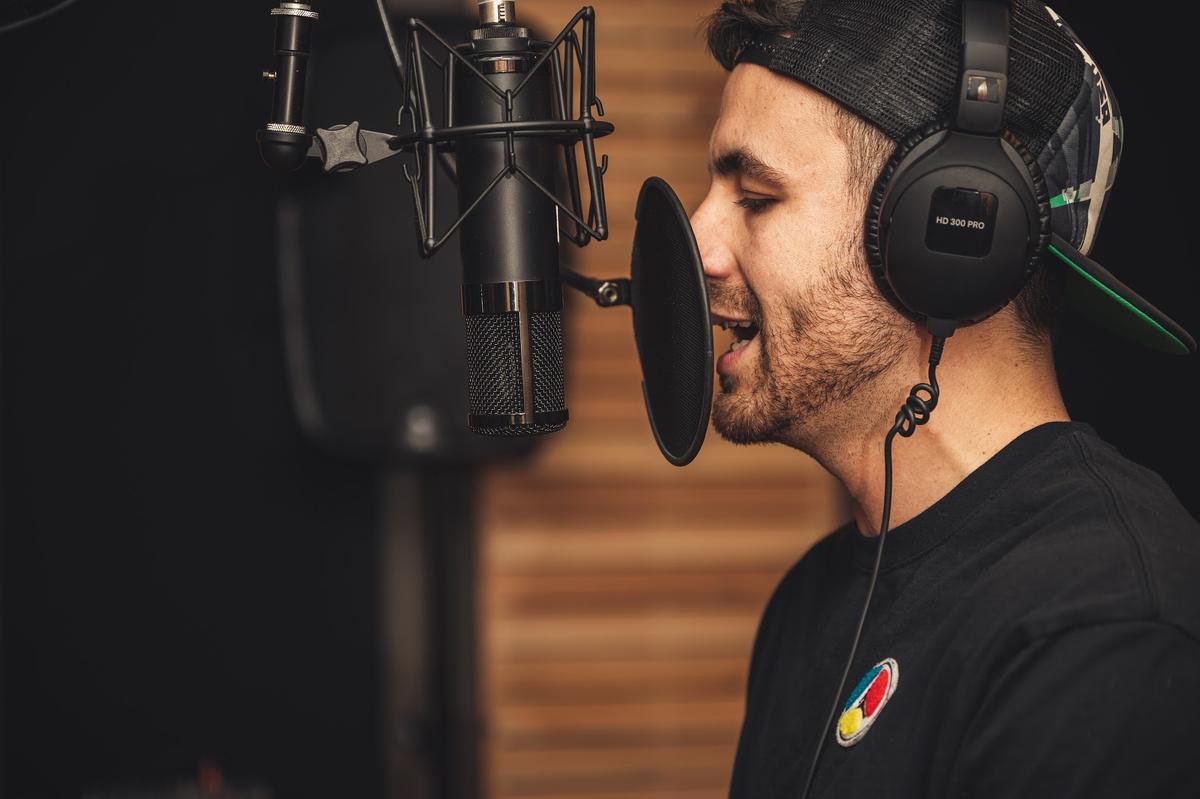
Very good points of interest in discussing headphones. Props to the author.
Thanks! Glad you liked it.
Thank you. I have always wondered what those ear monitors really are for. Now I know. Thanks again.